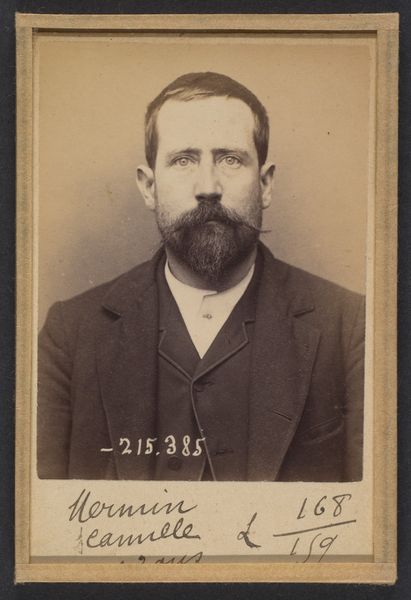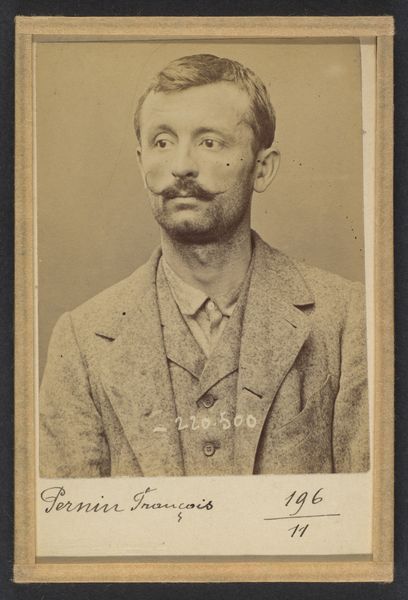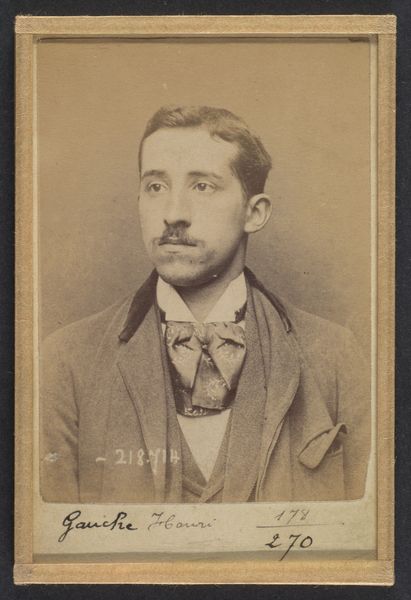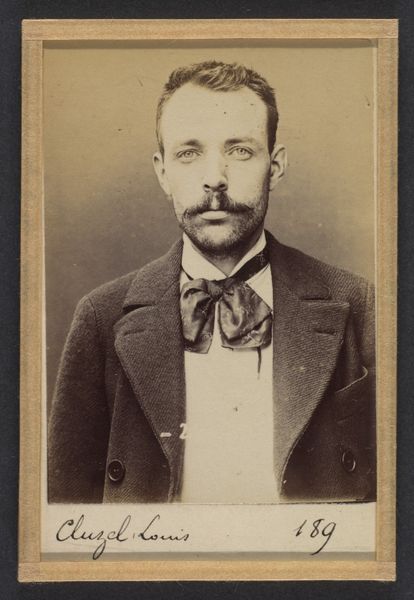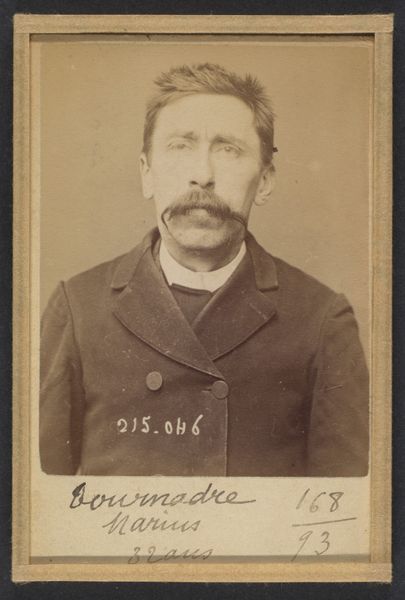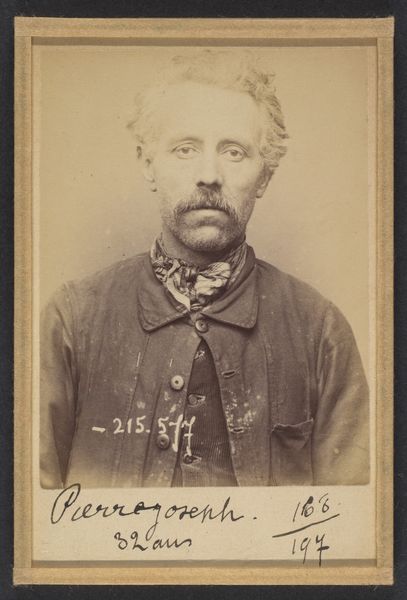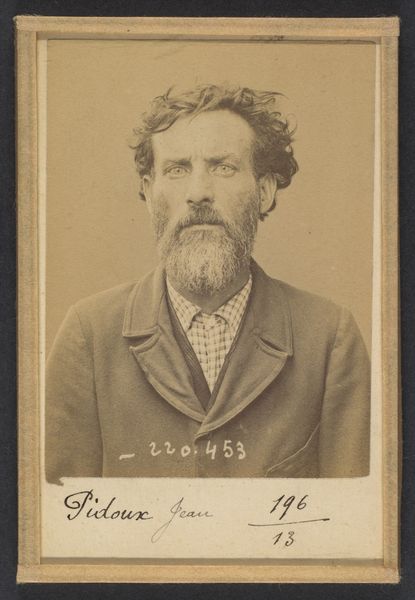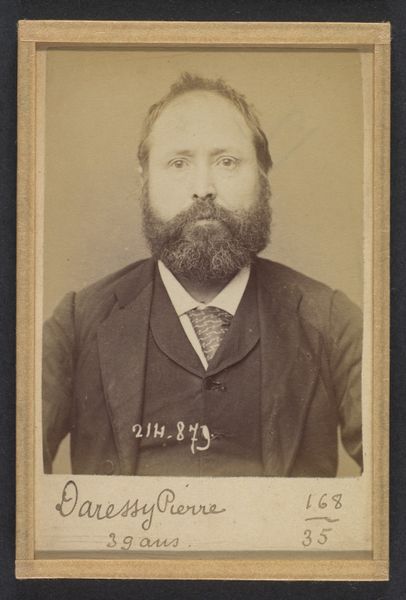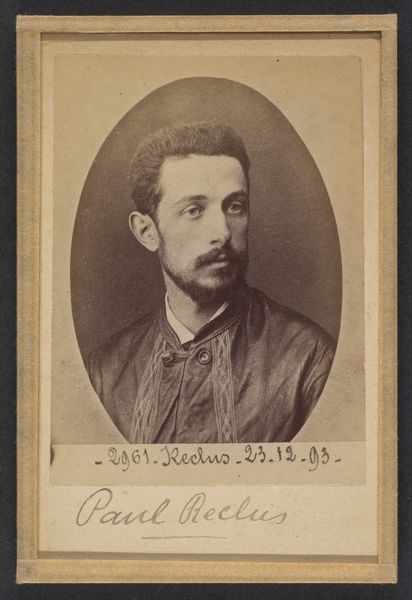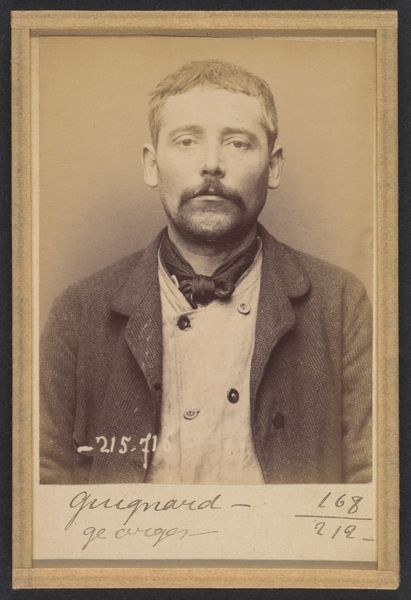
Kern. Jacob, Hermann. 33 ans, né le 26/8/60 à Berlinger (Suisse). Comptable. Anarchiste. 10/7/94. 1894
0:00
0:00
photography, gelatin-silver-print
#
portrait
#
portrait
#
photography
#
gelatin-silver-print
#
history-painting
#
realism
Dimensions: 10.5 x 7 x 0.5 cm (4 1/8 x 2 3/4 x 3/16 in.) each
Copyright: Public Domain
Editor: This gelatin-silver print, titled "Kern. Jacob, Hermann. 33 ans, né le 26/8/60 à Berlinger (Suisse). Comptable. Anarchiste. 10/7/94" and created by Alphonse Bertillon in 1894, feels incredibly stark. The man's direct gaze is unnerving, especially with the added text below the portrait that provides a snapshot of his identity: name, age, profession, and political leaning, as an Anarchist. What do you see in this piece? Curator: I see a document shaped by the intersection of state power and emerging photographic technology. Bertillon’s project wasn't merely portraiture; it was about crafting a system of surveillance, a means of control through the mass production and classification of images. Note the use of gelatin-silver print, a relatively new technology at the time, allowing for easier replication and dissemination of images. This speaks volumes about the institutional desire for efficiency in identifying and managing individuals deemed “deviant.” Editor: So you are saying the photograph served primarily as a tool to classify people? Curator: Exactly! Consider the meticulous detail in recording Kern's personal information. This isn't art for art's sake, but art as a function of a bureaucratic apparatus. The work reflects the larger social anxieties around anarchism at the time and the state's efforts to neutralize such threats through a systemized approach to tracking people. Also think about what the subjects in this new medium thought; the dynamic is as crucial to understanding the artifact as the final output itself. Editor: I see. So, it's not really about the individual, but the system that produced this image and what its use was? It sounds like an impersonal and extremely dehumanizing approach. Curator: Precisely. By focusing on the material process and the social context, we uncover a critical commentary on power, control, and the objectification of individuals within systems of governance. This portrait embodies the anxieties of an era grappling with rapid social and technological change. Editor: That gives me a completely different perspective. I'll definitely consider all of that next time I look at it.
Comments
No comments
Be the first to comment and join the conversation on the ultimate creative platform.

